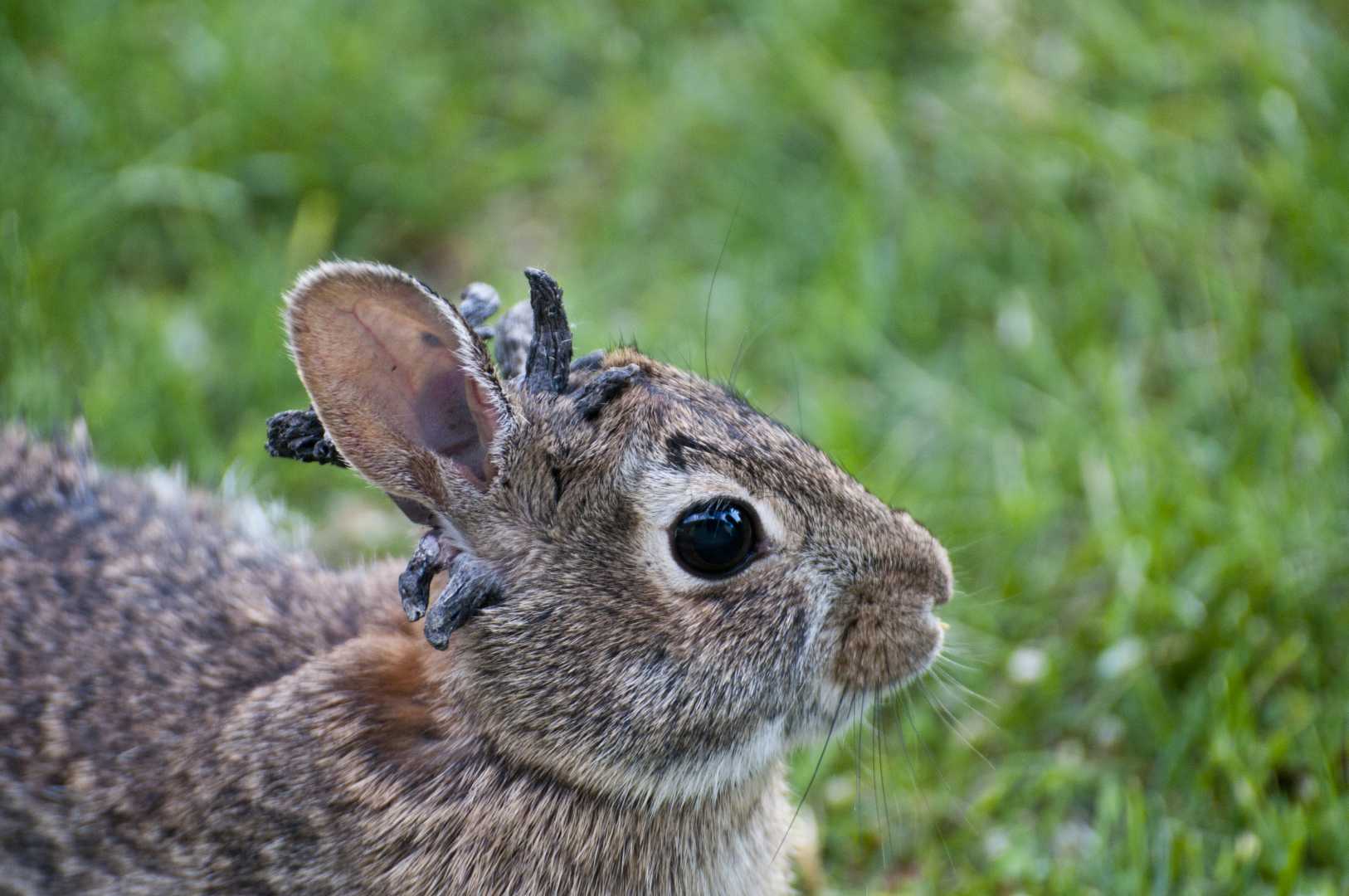News
Cottontail Rabbits in Colorado Develop Horn-Like Growths from Virus

DENVER, CO — In northern Colorado, residents have spotted cottontail rabbits with unusual horn-like growths on their faces. These peculiar formations are caused by a virus called cottontail rabbit papillomavirus, according to Colorado Parks and Wildlife (CPW) spokesperson Kara Van Hoose.
The sightings have sparked both curiosity and concern among locals, who have reported the rabbits in Fort Collins over the past few weeks. Van Hoose clarified that the virus cannot be transmitted to humans or non-rabbit pets, although she advised that pets should avoid contact with the infected rabbits.
The growths, known as rabbit papillomas, are generally benign for the rabbits, causing warts that can sometimes take on elongated, horn-like shapes. “It looks like black quills or black toothpicks sticking out all around his or her mouth,” noted Susan Mansfield, a local resident who encountered one of the affected rabbits.
While the virus primarily affects cottontail rabbits in the Midwest, occurrences in domestic rabbits are possible. CPW reported that domestic rabbits can experience more severe symptoms and should be monitored by a veterinarian.
Most cases of the papillomas are harmless, with infected wild rabbits typically surviving after their immune systems clear the virus. Van Hoose stated that the agency does not suggest euthanizing rabbits with these growths unless they significantly hinder the animals’ ability to feed or drink.
Concerns about the virus gained attention after residents began sharing images and experiences online. “We’re still seeing rabbit papillomavirus outbreaks, particularly in the summer when fleas and ticks, which can spread the virus, are more prevalent,” Van Hoose explained.
The history of the virus is notable, having prompted scientific research about its links to cancer in other species, including the human papillomavirus that causes cervical cancer. Additional folklore, such as the jackalope myth featuring rabbits with horns, has also been influenced by similar rabbit viruses.












